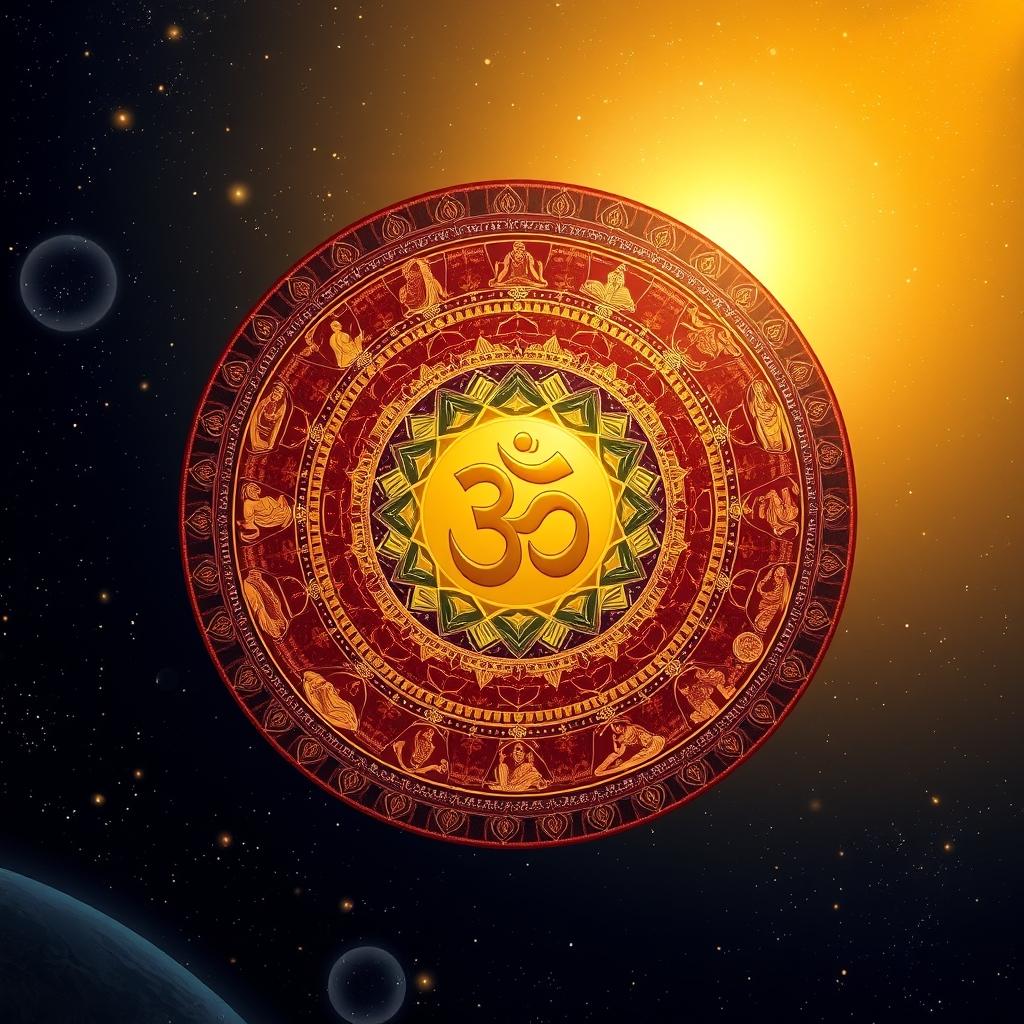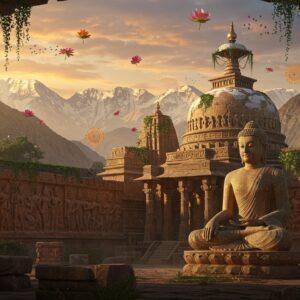
Come, let’s take a journey back in time, to the heart of Central India. Imagine a land bustling with art, culture, and royal grandeur. This is the Deccan region, the cradle of a truly magical art form – Deccan paintings. Flourishing between the late 16th and mid-17th centuries, these miniature paintings, also known as Deccani paintings, are not just artworks; they are vibrant stories painted on paper, capturing the soul of an era.
Born in the grand courts of the Deccan Sultanates like Bijapur, Golkonda, and Ahmadnagar, this art form is a beautiful ‘sangam’ of different cultures. It’s a testament to India’s incredible ability to welcome diverse influences and weave them into something uniquely its own. Let’s explore this captivating world and understand why it holds such a special place in India’s rich artistic legacy.

A Beautiful Blend: The Origins and Influences of Deccani Art
The magic of Deccan paintings lies in their beautiful fusion of styles. Think of it as a master chef creating a dish with the finest ingredients from around the world, yet giving it a distinctly Indian flavour. This art is a rich tapestry woven with threads from Persia, the Mughal empire, and the deep-rooted traditions of Southern India.
- The Grace of Persia: You can see the Persian touch in the delicate, fine lines, elaborate patterns, and the deep, jewel-like colours. As artists from Iran and Persia migrated to the welcoming Deccan courts, they brought with them their sophisticated techniques, which were lovingly adapted by local artists.
- The Realism of the Mughals: The powerful Mughal Empire to the north also left its mark. The natural, lifelike portrayal of people and the use of perspective in Deccan art are gifts from the cultural conversations that happened between the Mughals and the Deccan rulers. This added a new layer of depth and realism to the paintings.
- The Soul of India: At its heart, Deccani art is profoundly Indian. It joyfully depicts themes from Hindu mythology, uses bold and vibrant colours that remind one of our festivals, and carries the artistic legacy of ancient traditions like the Chola and Vijayanagara styles. This blend is what makes it so unique and heartfelt.
A Glimpse into History: The Royal Courts of the Sultanates
The story of Deccani painting is deeply connected to its patrons – the rulers of the Deccan Sultanates. The period from the late 1500s until the 1680s was the golden age for this art. Rulers in Ahmadnagar, Bijapur, and Golconda were great lovers of art and provided the support and environment for artists to flourish.
These paintings are like windows into that era. They show us the grandeur of courtly life, the fashions of the time, royal portraits, and scenes of music and celebration. The earliest known examples come from the time of Hussain Nizam Shah I of Ahmadnagar (1553–1565), beautifully preserving the history and cultural fabric of his reign.

Bringing the Spirit of Deccan Art into Your Home
The beauty of this traditional art form is timeless. Its rich colours and intricate designs can bring a touch of elegance and cultural depth to any modern home. At poojn.in, we understand the love for our heritage and offer beautiful pieces that echo the spirit of Indian artistry.
While an original Deccan painting is a museum treasure, you can embrace its aesthetic with our curated collection of decor. Imagine a beautifully framed piece that captures the essence of tradition. Our Ganesh Ji photo frames bring divine blessings with an artistic touch, perfect for your pooja room or living space. Similarly, our handpainted Krishna wall hangings reflect the devotional themes often seen in traditional Indian art, adding a serene and beautiful element to your decor.
By choosing these pieces from poojn.in, you are not just decorating your home; you are celebrating a legacy of Indian craftsmanship with the ease of online shopping.
Your Curiosities Answered: Exploring Deccani Paintings Further
Many art lovers are curious about what truly sets this art form apart. One of the most common questions is how Deccan paintings differ from the more famous Mughal paintings. While both styles share Persian roots and a love for detail, Deccani art is often described as more lyrical, romantic, and imaginative. It uses colour more boldly and often has a dreamy, fantastical quality that is utterly enchanting.
The main period for this art form spans from the late 16th to the mid-17th century, with a revival in the mid-18th century centered in Hyderabad. The defining features remain its vibrant colours, ornate details, and a unique blend of Islamic and Hindu themes, reflecting the syncretic culture of the Deccan. Today, you can admire these masterpieces in museums across India and the world, where they are preserved as precious cultural treasures.
An Enduring Legacy
Deccan paintings are more than just historical artifacts. They are a vibrant celebration of a time when different cultures met and created something beautiful together. Their legacy lives on, inspiring contemporary artists and reminding us of the rich, diverse, and colourful history of our incredible country. They are a testament to the fact that art has no boundaries and speaks a language that everyone can understand and cherish.


